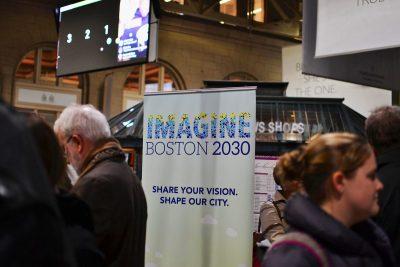
The City of Boston announced Friday it has reached a major milestone in its Go Boston 2030 transportation plan, with more than half of its proposed transportation infrastructure improvement projects currently underway.
The Go Boston 2030 plan identified 58 specific projects that are designed to make transportation safer, more convenient, more environmentally friendly and more accessible for residents across Boston’s neighborhoods, according to the plan. They range from improving access to the MBTA, building and improving sidewalks and bike lanes and redesigning city streets for greater efficiency.
Boston Mayor Martin Walsh first released the plan in 2017. To form the plan, the city collected more than 3,700 ideas submitted by residents and created a mayoral advisory committee of citizens and advocacy groups to determine the best course of action, according to Friday’s press release.
Richard Dimino, president and CEO of A Better City and co-chair of the mayoral advisory committee, said Walsh and his administration did a good job at developing and implementing the transportation plan.
“I have to give Walsh and Chris Osgood, Boston’s chief of streets, a lot of credit for moving forward with putting together one of the most substantive transportation plans in the city’s history,” Dimino said.
Among the city’s completed projects are a new bus-only lane on Washington Street as well as protected bike lanes throughout the city. There are currently 21 projects under implementation, 17 in design and 20 not yet started, according to the Go Boston website.
60 percent of Bostonians are now within a 10-minute walk of a transit station, up from 42 percent in 2017, according to the Go Boston 2030 website. Meanwhile, the city established its first Transit Team this year, which will work to improve regional rail travel.
Dimino said that there have also been challenges associated with the Go Boston initiative, especially in coordinating with the MBTA.
“One of those third parties that needs to step up is the MBTA, especially if Boston is going to become a transit-first city,” Dimino said. “We’re all hoping that at some point the T can move to being a 21st-century transit system.”
LivableStreets Alliance, a Boston transportation advocacy organization, is part of the advisory committee and is developing an accountability report on the city’s progress, to be released in March.
Louisa Gag, public policy and operations manager for LivableStreets, said while the progress shown on the new website is promising, there is still plenty of work to be done.
“We don’t think that [revealing] how many projects they started really tells the whole story,” Gag said, “That doesn’t speak about whether their pace is on track and it doesn’t speak to the quality of projects.”
Gag said LivableStreets’ accountability report will be an unbiased assessment that will include the whole story.
Andy Boudreau, 31, of Brighton, said he was a regular commuter, but hadn’t noticed any major changes so far. He said many of his frustrations relate to a convoluted bus schedule.
“For me, certainly certain bus connections don’t seem to link up correctly, like sometimes there’ll be a ton of one bus that’ll come by and then none of another,” Boudreau said. “It just seems very messy the way that it’s set up.”
Kayla Campbell, 18, of Roslindale, said the changes she’s seen have been mostly negative, such as the recent delays on the orange line.
“You can’t get from a certain place to another place,” Campbell said, “which is really aggravating.”